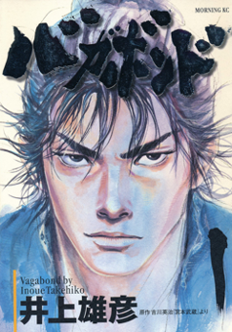Vagabond Manga: A Deep Dive into Its Epic Storyline and Characters

Introduction to Vagabond Manga
Vagabond manga has captivated readers with its stunning artwork and profound storytelling. This epic tale of swords, honor, and the quest for meaning draws inspiration from the life of one of Japan’s most legendary figures—Miyamoto Musashi. With each page, you’re transported to a world where every duel is not just a test of skill but also a reflection on life’s deeper truths. Whether you’re an avid vagabond manga fan or new to this genre, Vagabond offers something unique that resonates across generations.
The intricate blend of history and fiction allows readers to explore themes of identity, purpose, and the struggles inherent in being human. Dive into this rich narrative as we dissect its characters, themes, and the cultural significance it holds within the vast landscape of manga. Prepare for an insightful journey through Vagabond’s epic storyline and unforgettable cast!
The Historical Context of Vagabond
Vagabond is deeply rooted in Japanese history, weaving the life of the legendary swordsman Miyamoto Musashi into its narrative. Set during the early Edo period, it captures a transformative era marked by peace following years of conflict.
This backdrop shapes not only Musashi’s journey but also reflects broader societal changes. The samurai code and bushido ideals are intricately examined through his experiences.
The manga paints a vivid picture of feudal Japan—its political struggles, cultural practices, and philosophical inquiries. Readers encounter historical figures alongside fictional ones, blurring lines between fact and fiction.
Take note of how Takehiko Inoue meticulously researched to portray this time authentically. His attention to detail enriches character development and plot dynamics, drawing readers deeper into Musashi’s world. This makes Vagabond not just an adventure tale but a poignant exploration of human existence amid changing tides.
Exploring the Main Characters
Vagabond introduces readers to a compelling cast, with Miyamoto Musashi at the forefront. This legendary swordsman embodies both strength and vulnerability. His journey is one of self-discovery as he grapples with his purpose.
Then there’s Kojirō Sasaki, Musashi’s fierce rival. Their relationship is complex—a dance of admiration and animosity that adds rich layers to the narrative. Both characters reflect contrasting philosophies about life and combat.
The supporting characters further enhance the story’s depth. Otsu, for instance, serves as Musashi’s emotional anchor, highlighting his human side amidst chaos.
Each character brings unique perspectives on honor, violence, and redemption. They are not mere archetypes; they evolve throughout the tale in ways that resonate profoundly with readers.
With every encounter and conflict, these characters challenge each other, leading to growth that feels both authentic and moving within this breathtaking saga.
Themes and Symbolism in Vagabond
Vagabond stands out for its rich themes and intricate symbolism. At its core, it explores the quest for identity. Musashi’s journey reflects a deep search not just for skill in combat but also for understanding oneself.
The duality of strength and vulnerability plays a pivotal role. Characters are often caught between their martial prowess and emotional struggles, showcasing the balance between power and compassion.
Nature frequently serves as a backdrop to key moments, symbolizing growth and change. The changing seasons mirror Musashi’s evolution throughout his journey.
Friendship and rivalry intertwine seamlessly within the storyline. These relationships highlight personal growth while posing moral dilemmas that challenge preconceived notions of honor.
Death looms large in Vagabond, representing both an end and a new beginning. It drives home the transient nature of life, encouraging readers to reflect on what truly matters in their own existence.
Impact and Influence of Vagabond on the Manga Industry
Vagabond has significantly shaped the landscape of manga since its debut. Its intricate storytelling and stunning artwork set a new standard for the genre.
The series revitalized interest in historical narratives, particularly those rooted in samurai culture. Many creators now draw inspiration from its blend of action and philosophy.
Moreover, Vagabond’s deep character development influenced subsequent works to prioritize emotional depth over mere plot progression. Readers found themselves invested not just in battles but also in the characters’ internal struggles.
Its success helped popularize seinen manga outside Japan, attracting a more mature audience seeking complex themes. This expansion paved the way for other ambitious projects that challenge conventional storytelling norms within the industry.
Additionally, Vagabond’s visual style showcased how art can elevate narrative impact, encouraging artists to experiment with aesthetics rather than conforming to typical conventions. The legacy it leaves is felt across various genres today.
The Creator’s Inspiration and Process for Creating Vagabond
Takehiko Inoue, the mastermind behind Vagabond, drew inspiration from the classic novel “Musashi” by Eiji Yoshikawa. This literary work ignited his fascination with the legendary swordsman Miyamoto Musashi.
Inoue’s creative journey was deeply immersive. He devoted years to research, studying historical texts and martial arts. His goal was to capture not just battles but also the philosophy of a wandering warrior.
The art style is another testament to his dedication. Each panel boasts intricate details that breathe life into characters and settings. Inoue’s meticulous approach ensures readers feel every clash of steel and emotional struggle.
Collaborating with historians helped ground Vagabond in authenticity while allowing room for artistic interpretation. This blend transforms each chapter into a vivid tapestry of history and humanity, drawing you further into Musashi’s world at every turn.
Controversies Surrounding Vagabond and Its Reception
Vagabond has sparked discussions since its release, primarily due to its realistic portrayal of violence. Some critics argue that the graphic content detracts from the narrative’s depth. While others assert it serves as a vital element in showcasing the harsh realities of samurai life.
Another point of contention is how Vagabond interprets historical figures and events. Fans appreciate the creative liberties taken with Miyamoto Musashi’s story, while purists feel this strays too far from actual history.
Moreover, some readers have expressed discomfort with certain character depictions and relationships within the storyline. This has led to debates about representation and cultural sensitivity in manga.
Despite these controversies, Vagabond maintains a dedicated fanbase who admire its artistry and storytelling prowess. The discussions surrounding it only add layers to its legacy in the manga world.
Conclusion: Why You Should Read Vagabond
Vagabond manga stands out as an extraordinary work that transcends mere storytelling. It immerses readers in the rich tapestry of Japan’s feudal era, offering a captivating portrayal of ambition, honor, and the quest for identity.
The characters are not just figments of imagination; they reflect human complexity and struggles that resonate on many levels. Their journeys compel us to ponder our own lives while navigating themes that speak universally—life, death, love, and redemption.
Reading Vagabond is more than indulging in stunning visuals; it’s about embarking on a journey filled with philosophical reflections and emotional depth. The beautifully crafted artwork complements the intricate plotlines perfectly.
Moreover, Vagabond has left an indelible mark on the vagabond manga industry. Its influence continues to inspire aspiring creators today.
If you’re searching for a series with both substance and artistry, look no further than Vagabond manga. This epic tale awaits you—a timeless story that deserves a place on your reading list.
